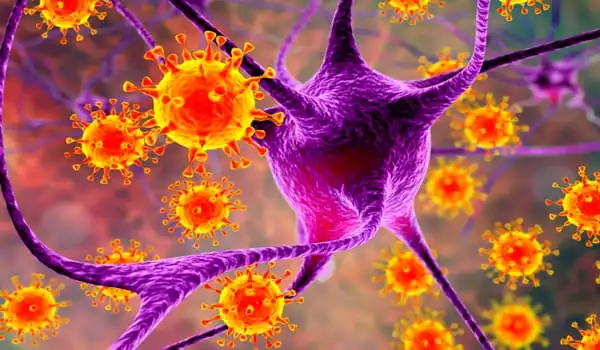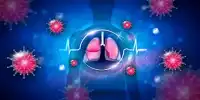Herpes medications such as valacyclovir, acyclovir, and famciclovir are antiviral treatments. Antiviral medications are intended to prevent viruses from multiplying in the body. Unlike antibiotics, which kill the germs that cause illnesses, antiviral medications just regulate viral multiplication rather than totally removing the target virus from the body.
A new approach for treating human herpes viruses has been developed by researchers at Lund University in Sweden. Rather than viral proteins, which were previously targeted, the new broad-spectrum technique targets physical features in the virus’s genome. The medication is made up of novel chemicals that pierce the virus’s protein casing and block genes from exiting the virus to infect the cell. It does not cause resistance and operates independently of virus genome changes. The findings have been published in the journal PLOS Pathogens.
Herpes virus infections are lifelong, with extensive periods of inactivity between reactivations, making therapy challenging. The fundamental challenge is that all known antiviral medications for treating herpes viruses cause rapid development of resistance in people with impaired immune systems, who have the greatest need for herpes treatment (e.g. newborn children, patients with HIV, cancer or who have undergone organ transplantation). The molecular and physical features of a virus determine the course of infection. According to researcher Alex Evilevitch, physical properties have received little study thus far.
The result of the present study is a first step towards the goal of developing a drug and we already have positive preliminary data showing that a herpes infection can be stopped for all types of herpes virus including the resistant strains.
Alex Evilevitch
“We have developed a novel and distinct method for analyzing viruses based on their distinctive physical features. Our discovery is significant in the development of antiviral medications because it does not target specific viral proteins that might rapidly evolve, resulting in treatment resistance – a problem that current antiviral drugs against herpes and other viruses have yet to tackle. We think that our research will help in the fight against hitherto incurable viral illnesses” According to Alex Evilevitch, Associate Professor and Senior Lecturer at Lund University, who published the new findings with his research team, Virus Biophysics.
The virus is made up of a thin protein shell called a capsid, and inside it is the virus’s genome, or genes. Alex Evilevitch earlier revealed that the herpes virus exhibits considerable internal pressure due to the infection’s dense packing of genetic material.
“The pressure is 20 atmospheres, which is four times higher than the pressure in a champagne bottle, and this allows herpes viruses to infect a cell by rapidly ejecting their genes into the cell nucleus after the virus has entered the cell. The cell is subsequently deceived into becoming a miniature virus factory, producing additional viruses capable of infecting and killing other cells in the tissue, resulting in various disease states “Alex Evilevitch explains.

He discovered small compounds that can penetrate the virus and “switch off” the pressure in the virus’s DNA without harming the cell, thanks to preclinical research at the National Institutes of Health in the United States. These molecules demonstrated a robust antiviral impact that was several times stronger than the typical treatment against some herpes types with the drug Aciclovir, as well as against resistant herpesvirus strains where Aciclovir does not operate. The strategy avoided viral infection.
Because all herpes viruses have identical structure and physical features, this antiviral therapy is effective against all herpes viruses.
“The medications available today for combating viral infections are highly specialized towards viral proteins, and if the virus mutates, which happens frequently, the drug becomes ineffective.” However, if you are successful in finding a treatment that tackles the physical features of a virus, such as lowering the pressure inside the herpes virus shell, you should be able to treat many different forms of viral infections within the same virus family with the same drug. Furthermore, it would function even if the virus mutated because the mutations have no effect on the herpes virus’s internal pressure.
“The result of the present study is a first step towards the goal of developing a drug and we already have positive preliminary data showing that a herpes infection can be stopped for all types of herpes virus including the resistant strains.”














